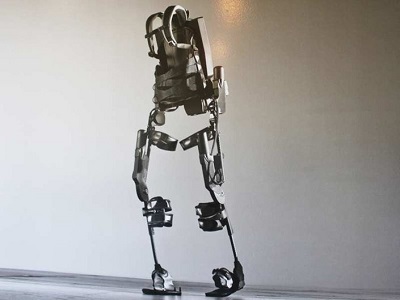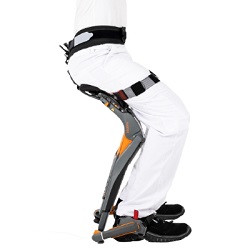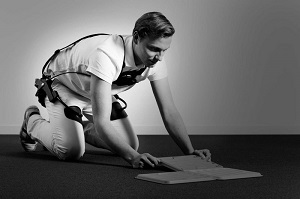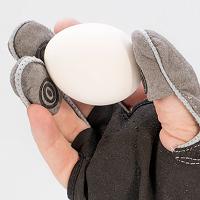The Six Million Dollar Construction Worker
by Black Ink Team
In the future, we will achieve better lifting through science. Many different companies are developing exoskeletons designed to help construction workers in and around the jobsite. These will singlehandedly reduce injuries, increase efficiency, and improve morale.

Two common myths about construction exoskeletons are that they will encase the people wearing them (similar to Iron Man’s suit) and they will improve the strength of their entire body. In both cases, not true. While shielding the wearer’s body makes sense from a safety point-of-view, very few exoskeletons that are being developed include that feature; they mostly emphasize the word-part ‘skeleton’ in that they consist of little more than the underlying structure itself. Furthermore, the applications for full-body exoskeletons on a regular jobsite are surprisingly scarce, so the number of manufacturers aiming towards that type of product is naturally limited. Instead, the vast majority of construction exoskeletons will be restricted to assisting the workers in a few or less areas of movement only.

Ekso Bionics’ EksoVest
Ekso Bionics is seeking to relieve workers from fatigue that stems from having to hold heavy tools in place for extended amounts of time. Their EksoVest is a torso-mounted device that has two metal arms equipped with electrical actuators. The worker’s biceps are held in the arms of the robot, and as a result they can effortlessly hold up to 15 extra pounds per arm. This makes drilling objects located above their head much easier, for example, and reduces the risk of them dropping tools on their head.

Noonee’s Chairless Chair
The Noonee Chairless Chair is a ‘passive’ exoskeleton (as opposed to ‘active’) which means it relies on the wearer’s own strength rather than electrical, hydraulic, or pneumatic assistance. It is a slim frame that gets attached to the worker’s legs and allows then to sit/crouch without exerting any energy. Also, they can go directly from standing/walking to sitting while wearing it.

Laevo’s Laevo
Another passive exoskeleton, the Laevo is designed to transfer forces that are applied to the workers back to their thighs. It works by attaching a chest plate to a harness that straddles the worker’s thighs and rear-end. Its only drawback is that it does not support sitting.

Bioservo’s SEM Glove
Sometimes all workers need is to get a grip. The SEM Glove by Bioservo is a glove which can apply additional pressure to the worker’s grasp. Sensors inside the glove let it know when the worker’s fingers are tightening or letting up. This device will let people who have nerve damage or who have suffered strokes perform jobs they previously could not.
